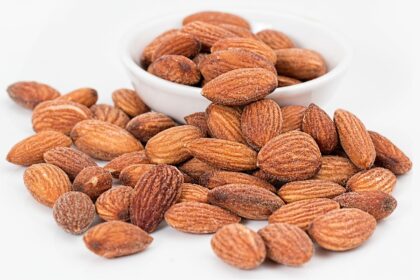Understanding the glycemic index (GI) idea might be crucial when it comes to selecting nutritious foods. The GI scale rates foods high in carbohydrates according to how quickly they elevate blood sugar levels. Here, we’ll examine the variations between foods with a high vs. low glycemic index and how they may affect your health.
What Is the Glycemic Index?
The Glycemic Index gauges how diets high in carbohydrates affect blood sugar levels. Higher values indicate faster blood sugar increases. Foods are given a GI value, often on a scale from 0 to 100. Here is a list of foods with high and low GIs:
High Glycemic Index (GI) Foods:
Quick Energy Boosters
GI values of 70 or above are considered high-GI meals. These foods digest quickly, raising blood sugar levels abruptly and significantly. The term “fast carbs” is frequently used to describe foods like white bread, sugary cereals, white rice, and baked goods.
Pros:
They are ideal for rapid energy, making them popular with athletes before and after intense workouts.
It is useful for treating low blood sugar (hypoglycemia) quickly.
Cons:
Can lead to rapid blood sugar spikes, followed by crashes, which may not be suitable for those with diabetes.
It may not provide long-lasting satiety, leading to increased hunger.
Low Glycemic Index (GI) Foods:
Steady and Sustained Energy Sources
Low GI foods have a GI value of 55 or less. Some foods have a slower digestion process, which gradually releases glucose into the bloodstream. They provide a steady supply of energy and support stable blood sugar levels. Examples include most vegetables, legumes (beans, lentils), non-starchy fruits, whole grains (oats, quinoa), and most legumes.
Pros:
Promote sustained energy, making them suitable for regular daily meals.
Aid in appetite control and weight management due to longer-lasting satiety.
Beneficial for blood sugar management in individuals with diabetes.
Cons:
May not provide the quick energy boost needed before or after intense physical activity.
Choosing the Right Carbohydrates:
Balancing high and low GI foods is key to a healthy diet. Consider the context in which you consume them:
High GI Foods: Use them strategically when you need quick energy, such as before or after vigorous exercise.
Low GI Foods: Make them the foundation of your regular meals for sustained energy and better blood sugar control.
Finally, knowing the glycemic index will help you make smart dietary decisions. You can get the energy and health advantages you require for various scenarios by including a combination of high vs. low glycemic index items in your diet. The secret is to prioritize balanced nutrition and whole, unprocessed meals for general well-being.
It’s important to remember that everyone reacts differently to carbohydrates. For personalized dietary recommendations, consult with a healthcare provider or nutritionist based on your individual needs and health goals.




